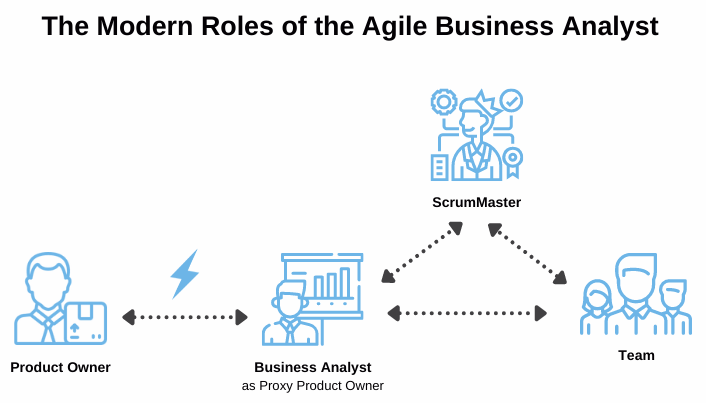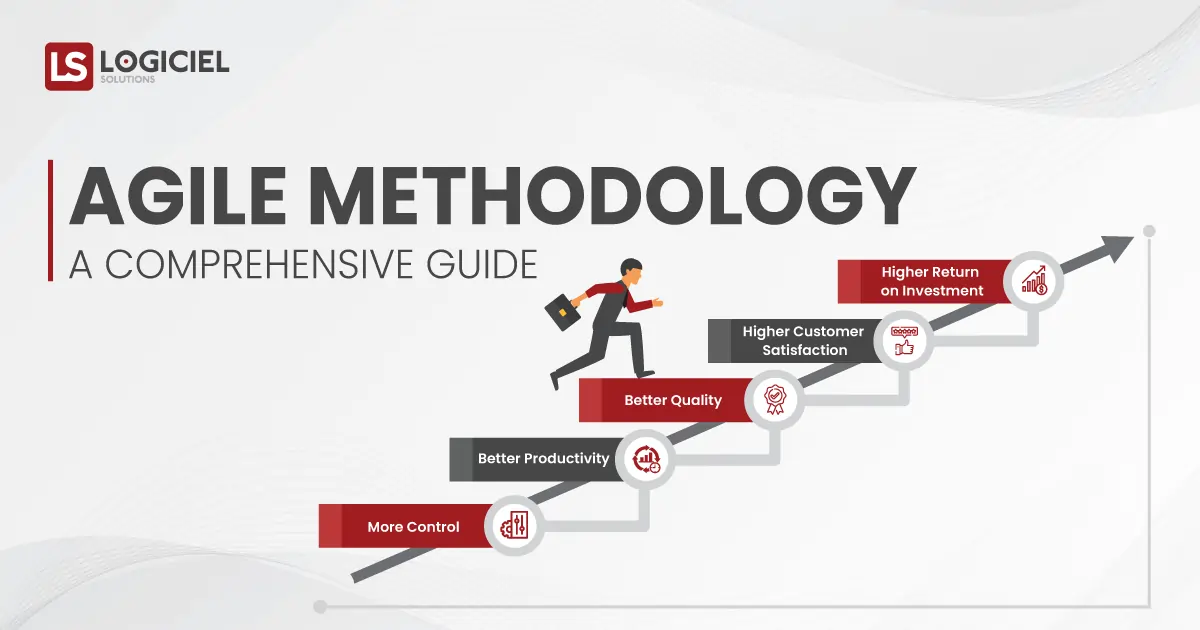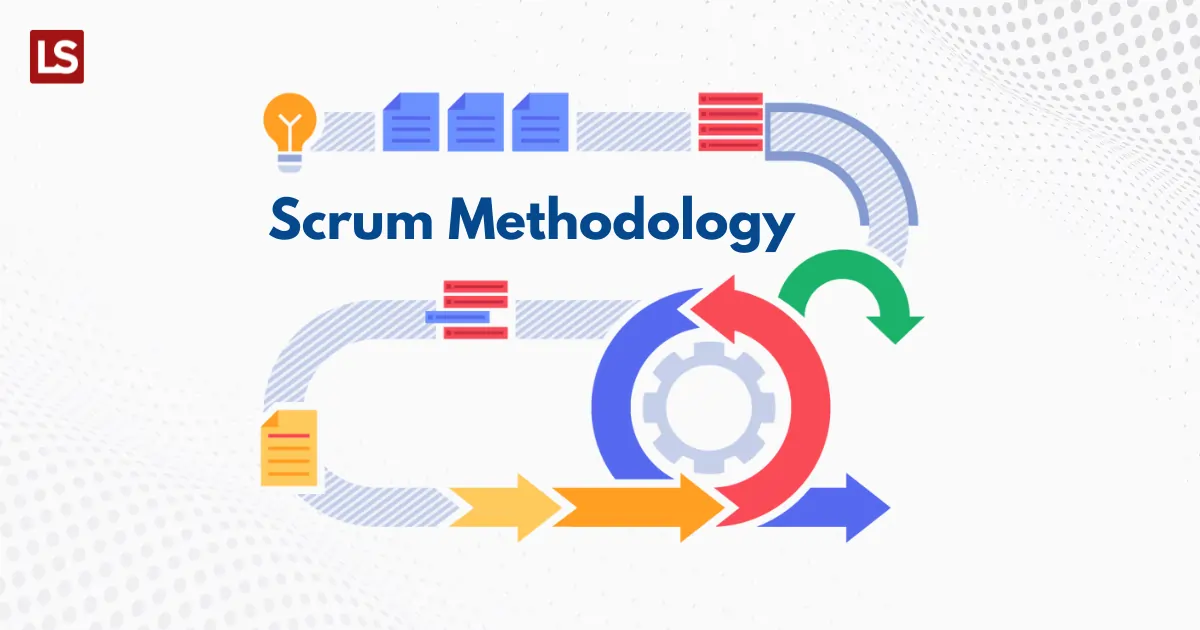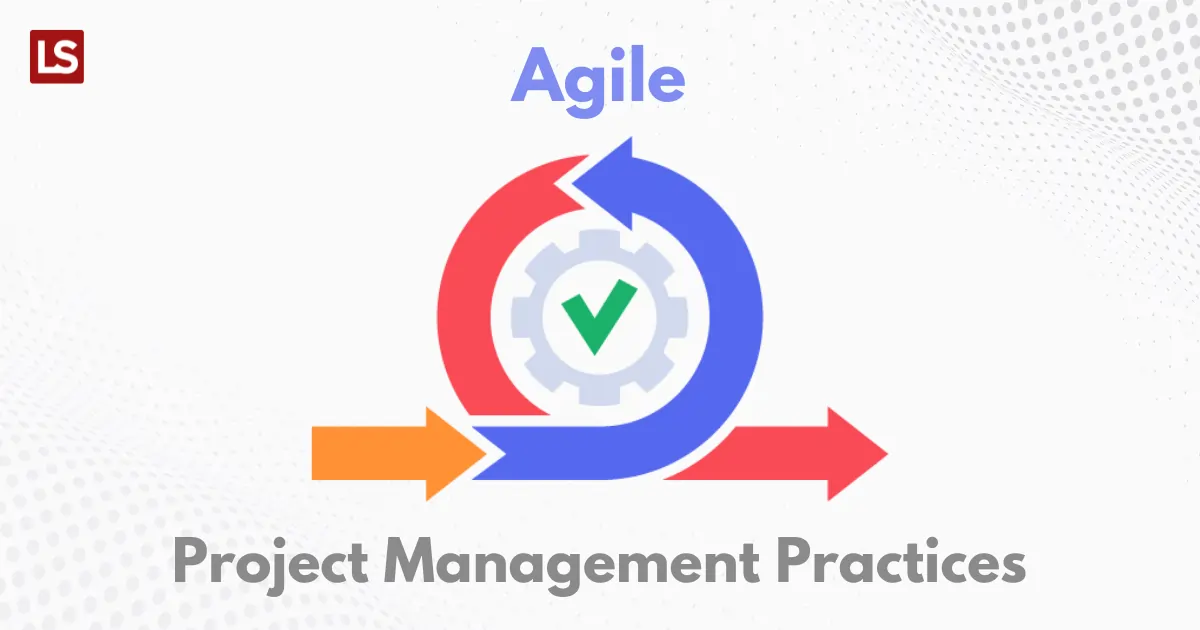To commence, What’s the Buzz Around “Agile?”
People who are familiar with the world of software have for sure heard the word “Agile” may be more times than one can count. Being Agile is associated with continual collaboration, timely delivery, releasing faster, adapting constantly.
Although the term “Agile” in the context of software development is quite well known, the definitions vary.
In the software development process, agile is a set of practices that are to improve the effectiveness of the development teams and organizations. It involves gathering requirements and deriving solutions through the collaborative effort of cross-functional teams and their end users. Now when we know what Agile is, let’s check out the roles:
Agile Roles
The roles in agile are different from the traditional perspective. Since the methodology has been developed, the roles have changed and no defined tasks have been left for the BAs in an agile environment. Looking at the brighter side, Agile has provided more flexibility in the BA role, the only challenge here is to come up with the aspects where business analysis techniques need to be applied in a project.
There are four primary roles included in an agile project.
- The Product Owner defines the vision, manages the backlog, and prioritizes it. Basically, he or she is the ultimate decision-maker for the product. In addition, the scope of the role is wide covering which involves overseeing development stages, anticipating needs, and keeping track of each iteration. The Prime role is to liaison between the Customer/stakeholder and team.
- The Scrum Master is the guardian of the team’s process and makes sure that the team lives by the agile methodology. This role is responsible for clearing any bottlenecks, interacting with the Product Owner to formulate the backlog for the next sprint, and enabling close cooperation across all roles.
- The Team is a group of 5 to 9 people dedicated to the project full time and are responsible for self-organizing to deliver value to the customer in each iteration. The team works together for the product development and split the work based on the conditions at the given time.
- A Stakeholder provides input to the business objectives of the product. Stakeholders who are involved actively in the project are part of the team. If not actively involved, Stakeholders may still interact with the product owner to provide their input on the product backlog. Stakeholders have all the legal rights and may control the scheduling of the project, and any budget-related decisions.
With the advent of the Agile approach, business analysts struggle to determine how their role maps to the new approach. Although the role may not be defined, that doesn’t mean business analysis does not occur. Agile focuses on adding value to the projects, So does the BAs.
For decades, Business analysts (BAs) have played a vital role in software development. Earlier in waterfall development, the BA was responsible for eliciting requirements from customers and subject matter experts and documenting business requirements. Additionally, BAs often participated in or led the formal or informal testing once the development phase got completed. Agile may have not provided a defined set of roles for the BAs but they still have a significant role to play in Agile Development. Here are the modern roles the BAs play in Agile:

As the product owner can’t be available all the time to guide the development team with their doubts and queries hence, he or she mostly prioritizes the backlogs and handover the same to the BA playing proxy PO role for proper documentation and perform activities like:
- Determine the exact requirements.
- Define and organize the provided backlogs by the PO.
- Develop user stories with flexible acceptance criteria followed by backlogs prioritization.
- Create an Action Plan for the development team with accurate documentation of every detail.
- Make decisions for product increments release.
However, a BA playing Proxy PO role can’t take main decisions about the product, he or she can still fill the communication and management gap between the Product Owner and Development Team. A BA implements processes where the entire team participates in Sprint Planning. Along with that, a BA performs many roles to achieve business goals. Some of them are:
Ensuring Right Requirements Are Documented
The business analysts are qualified to know all the required documents to support projects on business analysis. One of the prominent roles a BA plays is to make sure all needed requirements are available to support the project. To make it more organized at work, all these requirements are documented and maintained, which helps in reducing any costs that might have occurred.
Furthermore, An adept business analyst will take into account the different perspectives and get the needs of the various stakeholders on the project with such deep understanding that help the team to grasp easily and ensure the success of the project.
Bring down Reworking
It’s very necessary to be all ears when having requirements. Being a business analyst, we always focus on the requirements So that nothing slips through and the end-product is desirable. Which certainly helps companies to cut any costs that could have been realised when working on significant projects. This honing way of recording each and every detail reduces the issue of reworking since the gathering process of requirements is thoroughly explored and well kept, so there can’t be more delays when the entire process of the project starts.
Good Rapport Between IT Staffs & The Business
Good communication is considered when planning projects in a business. Business analysts are known to use their excellent communication and soft skills to liaison between business and IT and between project stakeholders.
Suggest Project Frameworks Used in IT
With several stakeholders on a project, there is a need for Business Analysts, who will help to ensure that any small team can be scaled to form a bigger one with quality and more output. With the help of business analysts in this, there is a higher chance to have a more successful completion of the project.
Business analysts could also help or suggest the IT teams with picking up the best-suited frameworks as per the product needs. Moreover, It could be a set of processes, tasks, and tools that provide guidance and structure for the execution of a project. Agile, Lean, Critical path method, Event chain methodology (ECM), Scrum, Six Sigma, etc are some examples where a BA could really help the Developers select the best.
Help In Discovering Cost-Effective Solutions
The business analysts always engage in business projects and end up discovering more solutions to be used to ensure that plans are cost-effective. They continually research the problem first and identify quality solutions from their findings that will reduce costs to the business.
Help team to work seamlessly
There are many Cross-team dependencies that need to be identified by BA. To be clear with the sprint planning, BA creates tickets to be sized correctly. He or she helps the team by ensuring that the requirements that are being worked on are set on priority. Thus, help bring people together and develop team unity around.
A Good Team Collaborator
Business analysts get the opportunity to help their teammates clear bottlenecks. Doing this improves relationships with other team members and gives the BA an opportunity to expand their toolkit and learn new skills through performing tasks generally performed by other roles such as testing, user interface design, preparing test data, training, and providing an update to an executive sponsor.
Conclusion
We might look at the business analysis process differently in agile and try to avoid the analysis steps but, the reality is, it is just as important as ever and just because we are doing Agile we can’t ignore the crucial roles a BA has to play in the product development. Going for Agile without a BA is likely to face more challenges inside the project and give it an unnecessary stretch on time.




